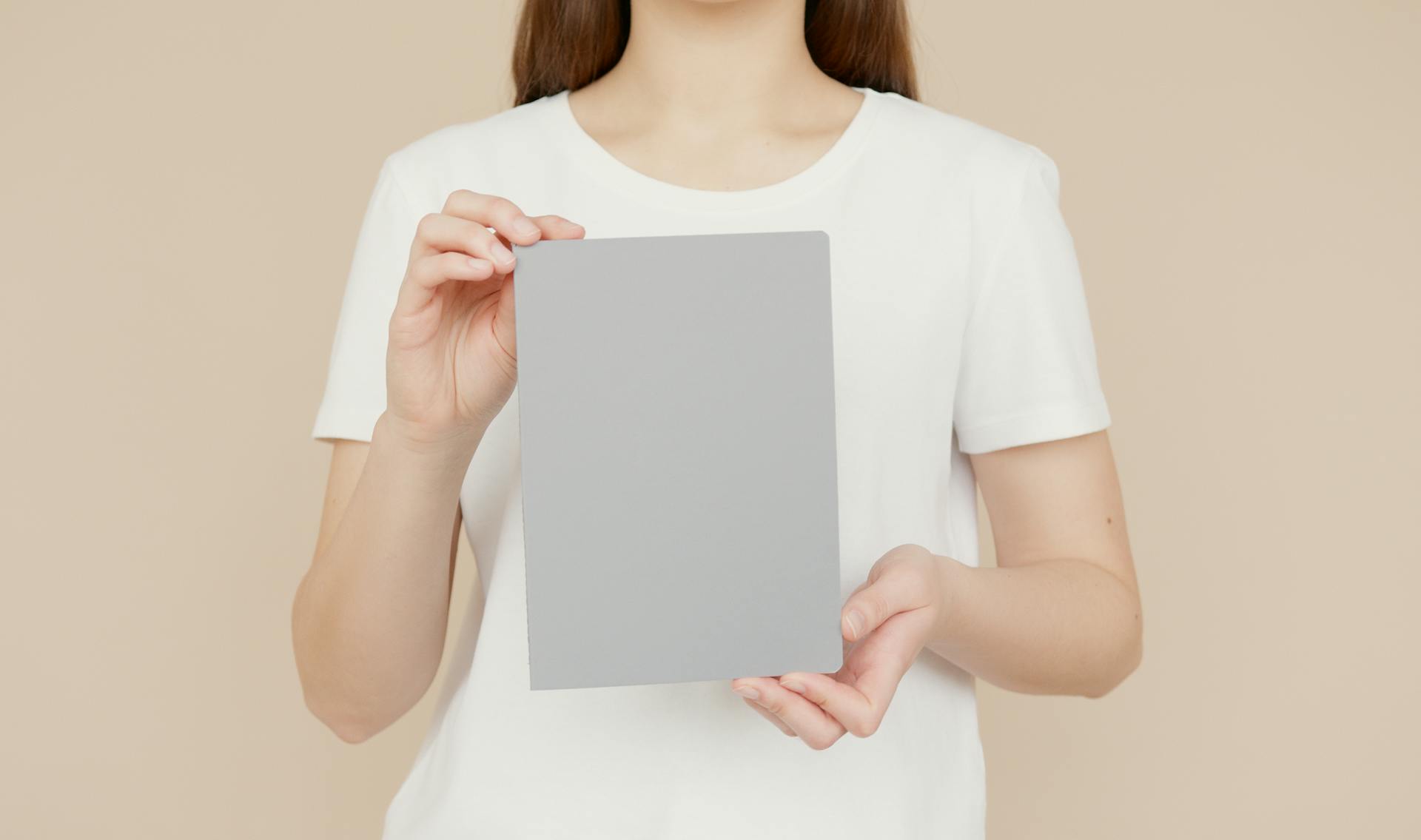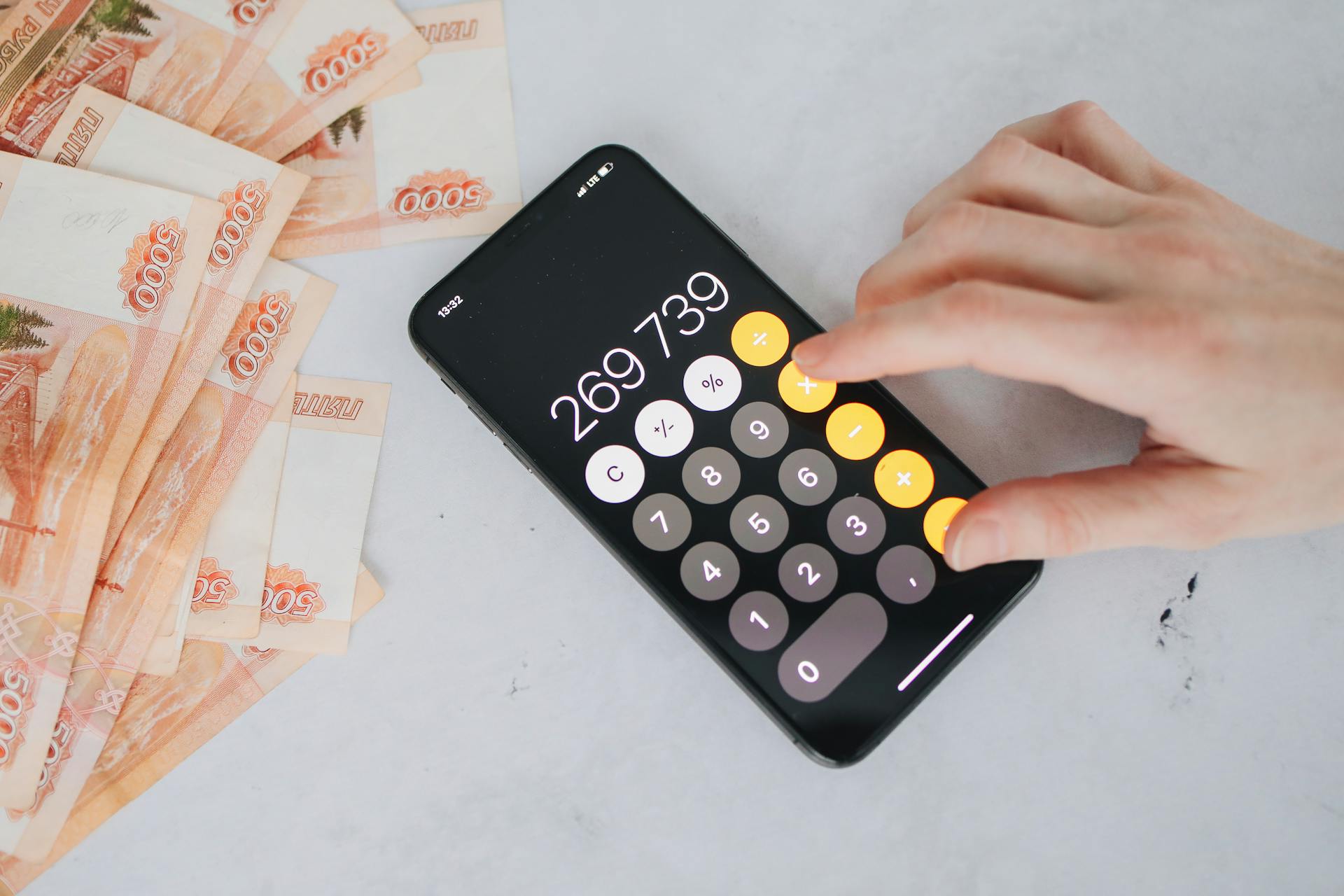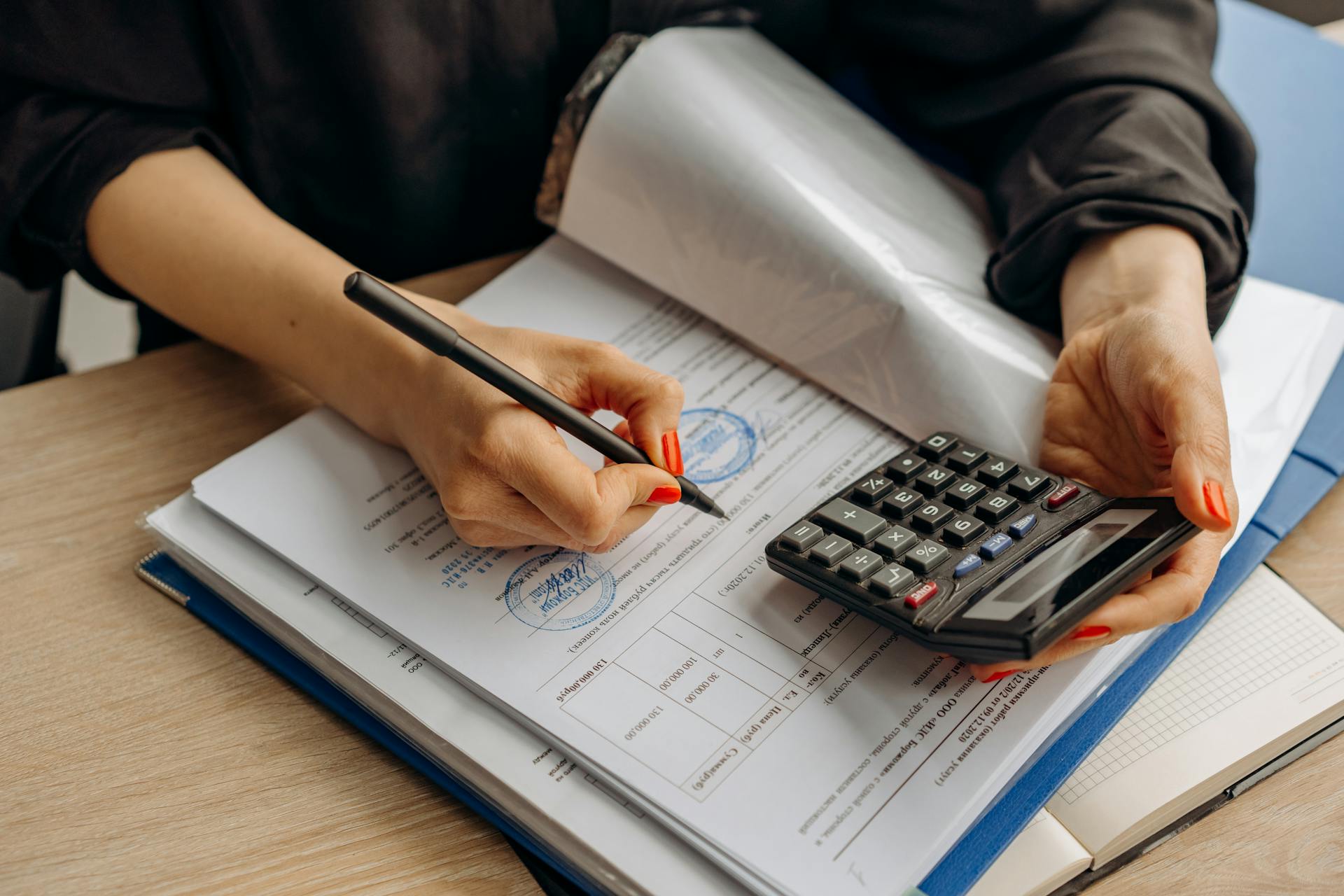
A checkbook is a record of all the transactions in your checking account, including deposits and withdrawals. It's a crucial tool for managing your finances.
The checkbook is usually a book or a ledger that contains a register of all the checks you've written, as well as any deposits or withdrawals made to your account. This record helps you keep track of your account balance.
To write a check, you need to fill out a check form, which typically includes the date, the payee's name, and the amount of the payment. You'll also need to sign the check to make it valid.
Your checkbook register should be updated after each transaction, including when you deposit or withdraw cash, write a check, or use your debit card.
A different take: How to Find Account Number on Checkbook
What is a Check?
A check is a written, dated, and signed draft that directs a bank to pay a specific sum of money to the bearer.

The person writing the check is called the payor or drawer, while the person to whom the check is written is the payee. The bank on which the check is drawn is called the drawee.
A check contains information like the writer's checking account number, the bank's routing number, and the name of the bank.
Readers also liked: Chase Debit Card Routing Number
History and Features
A check is a widely used payment method that has its own set of features and history. The features of a check are standardized, making it easy to recognize and fill out.
The name and contact information of the person writing the check is located at the top left, along with the name of the bank that holds their account. The date must be written on the line in the top right corner of the check.
The payee's name goes on the first line in the center of the check, indicated by the phrase "Pay to the Order Of." The amount of the check in a dollar figure is filled out in the box next to the payee's name.
You might enjoy: Checkbook Signature Line
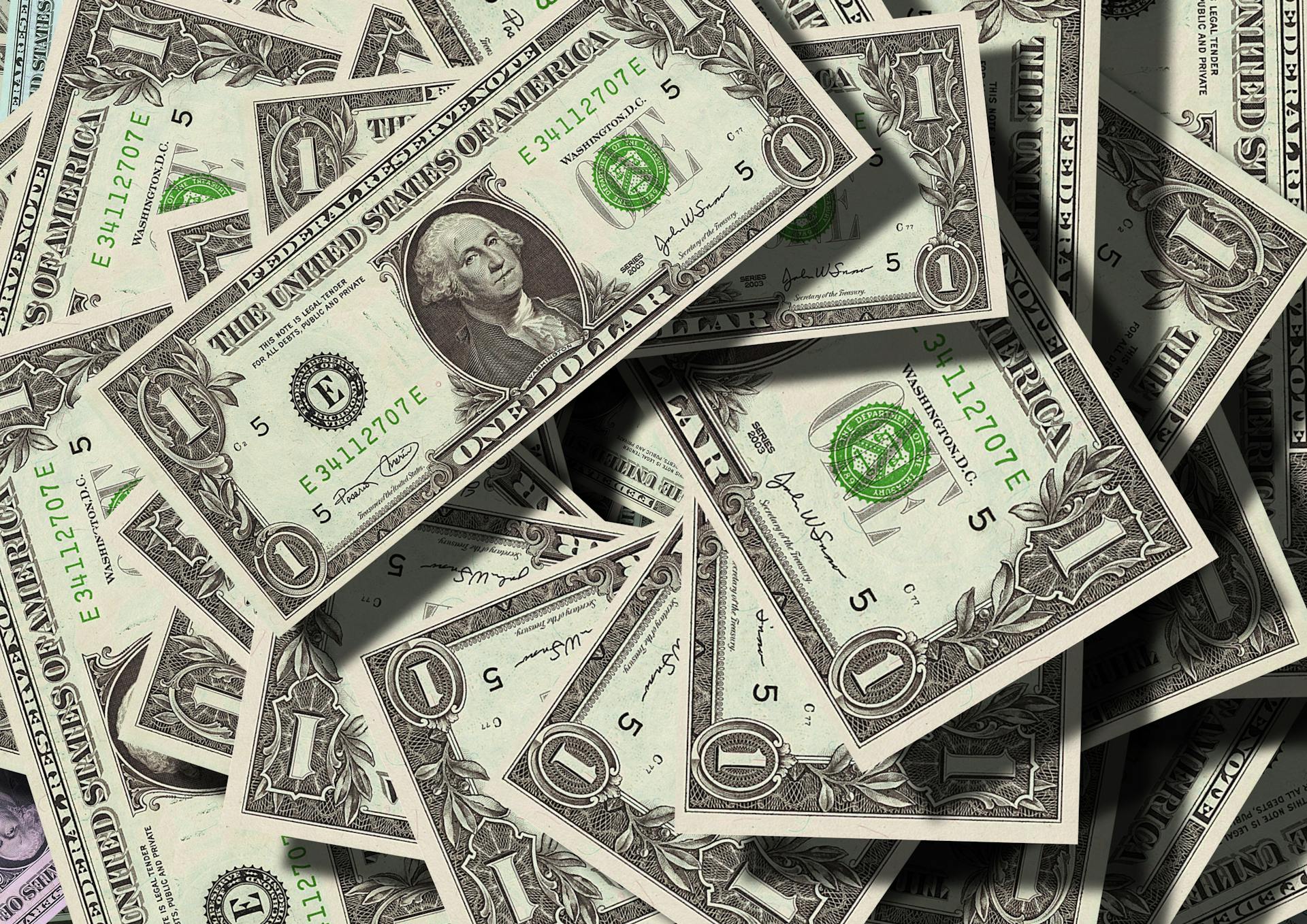
Here are the key features of a check in a quick reference list:
- The date must be written on the line in the top right corner of the check.
- The payee's name goes on the line in the center of the check.
- The amount of the check in a dollar figure is filled out in the box next to the payee's name.
- The payor signs the check on the line at the bottom right corner of the check.
The back of the check has an endorsement line for the payee's signature when they are cashing or depositing the check.
Suggestion: Cancelled Check Definition
History of Checks
Checks have been around for thousands of years, with some historians believing a type of check was used among the ancient Romans.
The modern check, however, became popular in the 20th century, thanks to automation that made the check process faster and more efficient.
The 1950s saw a surge in check usage, as machines were able to sort and clear checks with ease.
Check cards, first introduced in the 1960s, paved the way for today's debit cards.
The oldest surviving American checkbook is from the Bank of New York, dating back to the 1790s.
Credit and debit cards, as well as other electronic payment methods, have since become the dominant means of payment, making checks somewhat uncommon.
For your interest: What Is a Personal Checks
Check Features
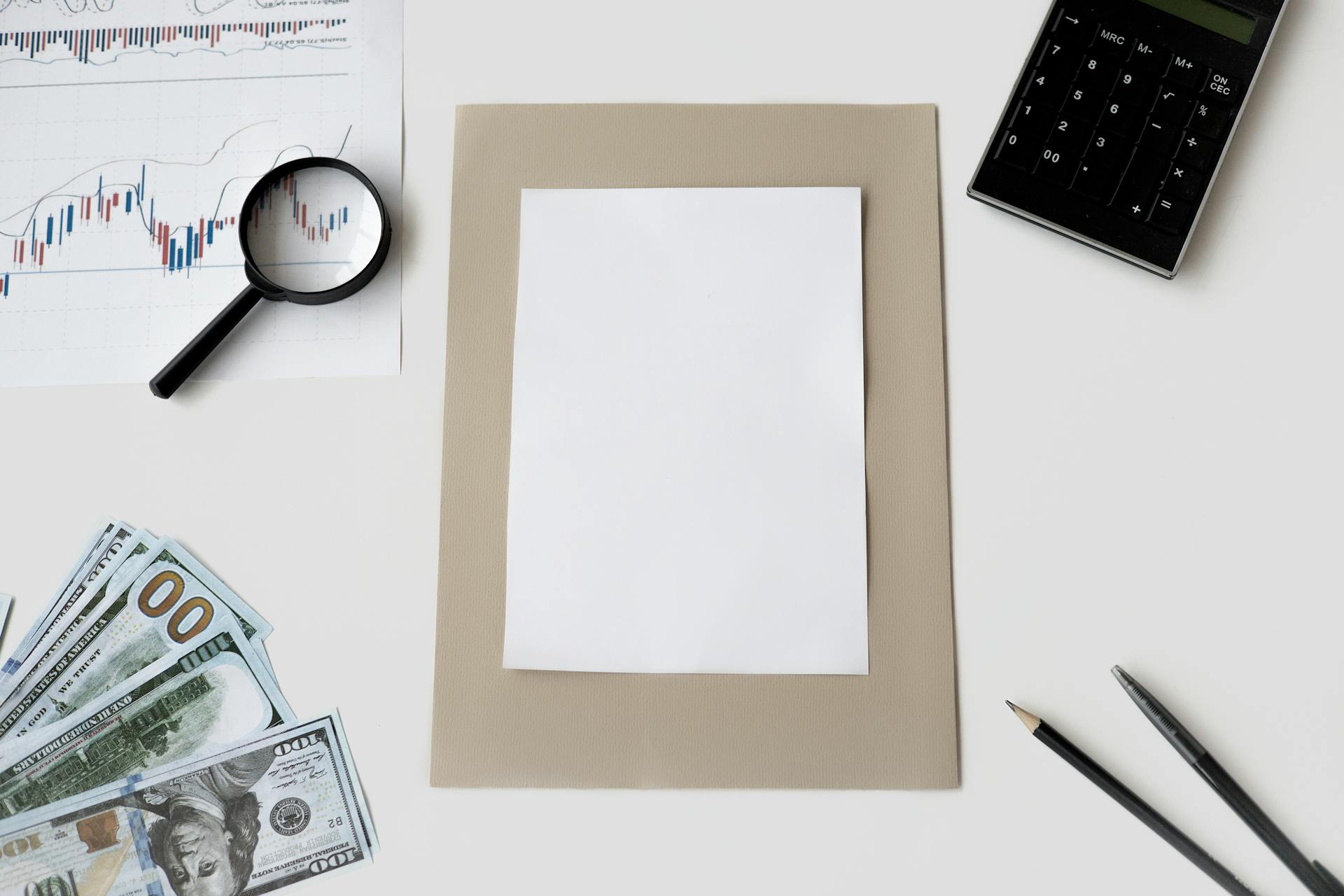
A check is a written instruction to a bank or financial institution to pay a given amount from the check holder's account to the bearer. It's a fundamental payment method that's been around for centuries.
The check typically has several key features that identify the payor, payee, and bank account involved. The name and contact information of the person writing the check are located at the top left, along with the name of the bank that holds the account.
The date of the check must be written on the line in the top right corner. The payee's name goes on the first line in the center of the check, indicated by the phrase "Pay to the Order Of." The amount of the check in a dollar figure is filled out in the box next to the payee's name.
A series of coded numbers is found along the bottom edge of the check, which includes the bank's routing number, payor's account number, and check number. These numbers help facilitate the check clearance process.
See what others are reading: Check Account vs Saving Account
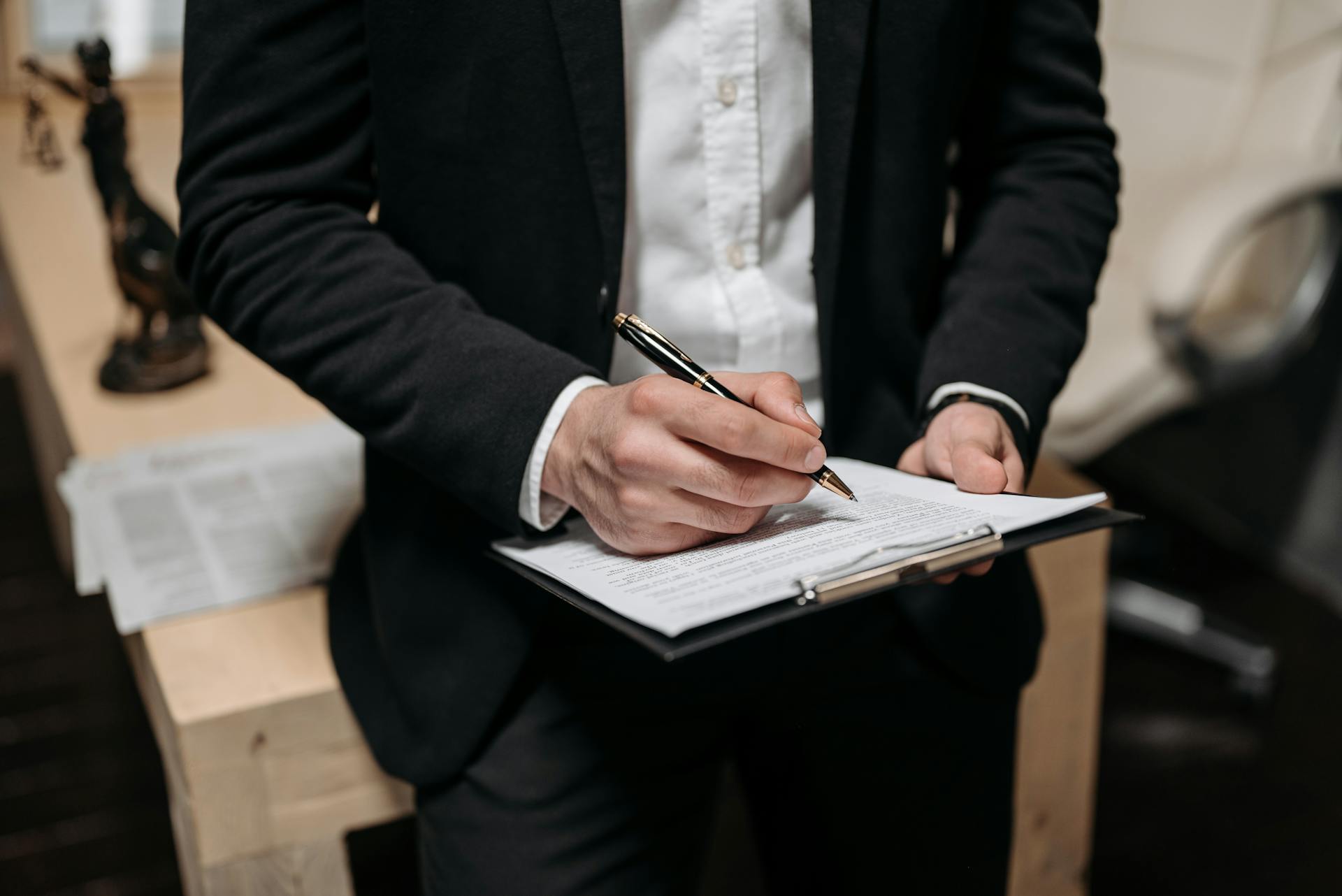
Here are the key features of a check:
- Payor's name and contact information at the top left
- Payee's name on the first line in the center, indicated by "Pay to the Order Of"
- Amount in a dollar figure in the box next to the payee's name
- Amount written out in words on the line below the payee's name
- Payor's signature on the line at the bottom right corner
- Coded numbers along the bottom edge, including bank's routing number, payor's account number, and check number
A cheque is not a request sent to the bank but an unconditional order, meaning the bill's face value must be fulfilled without any condition. Any oral order for the promise of fund payment is not the same as cheque recognition.
Here's an interesting read: Definition of Travellers Cheque
Types of Checks
Personal checks are the most common type of check, but there are other types available for specific situations.
A certified check is a type of check that verifies the drawer's account has enough funds to cover the check amount. It's essentially a guaranteed check that won't bounce.
Cashier's checks are another type of check, often used for large transactions or when you need to make a payment to someone you don't know well.
Payroll checks are used by employers to pay their employees, and are typically direct deposited or mailed to the employee's address.
Suggestion: Check Definition Money
Check Format and Details
A check is a written order for payment that typically has a specific format. The name and contact information of the person writing the check is located at the top left, and the name of the bank that holds the drawer's account appears on the check as well.
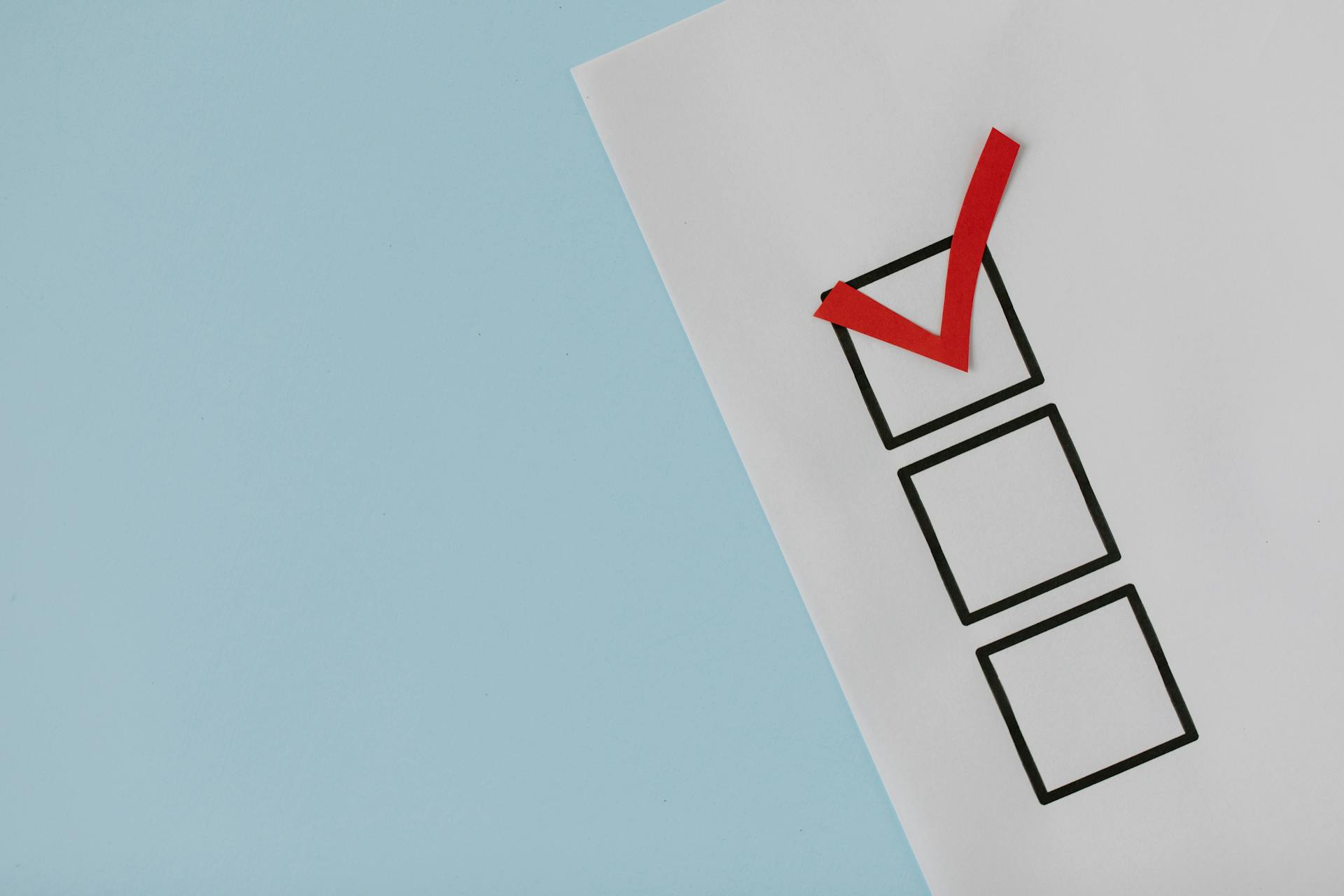
The date must be written on the line in the top right corner of the check. The payee's name goes on the first line in the center of the check, indicated by the phrase "Pay to the Order Of." The amount of the check in a dollar figure is filled out in the box next to the payee's name.
The amount written out in words goes on the line below the payee's name. The payor signs the check on the line at the bottom right corner of the check, and the check must be signed to be considered valid.
A check has several key features, including a memo line in the bottom left corner for notes, and a series of coded numbers along the bottom edge, which include the bank's routing number, the payor's account number, and the check number.
Here are the key features of a check:
- The date must be written on the line in the top right corner of the check.
- The payee's name goes on the first line in the center of the check.
- The amount of the check in a dollar figure is filled out in the box next to the payee's name.
- The amount written out in words goes on the line below the payee's name.
- The payor signs the check on the line at the bottom right corner of the check.
Payee Line
The payee line is a crucial part of a check, and it's essential to get it right. You should write the name of the person or organization that you wish to pay, also known as the payee.

Use the recipient's full name, rather than a nickname, to avoid any confusion or difficulty for the person depositing the check. This is especially important if you're paying a business or organization, as their name may be listed as a company rather than an individual.
If you don't want to name a specific person or organization, it is possible to pay your check to the order of "Cash." However, this is risky because anybody can cash the check, not just your intended payee.
Here are some tips for filling out the payee line:
- Use the payee's full name, rather than a nickname.
- Be specific about who you're paying, especially if it's a business or organization.
- Consider using a payee line that includes a reference number or account number to help with tracking and depositing the check.
By following these guidelines, you can ensure that your payee line is accurate and complete, making it easier for the payee to deposit or cash the check.
Dollar Box
The dollar box on a check is a crucial detail that's often overlooked. It's meant to make it difficult for someone to alter the number you write in this box.
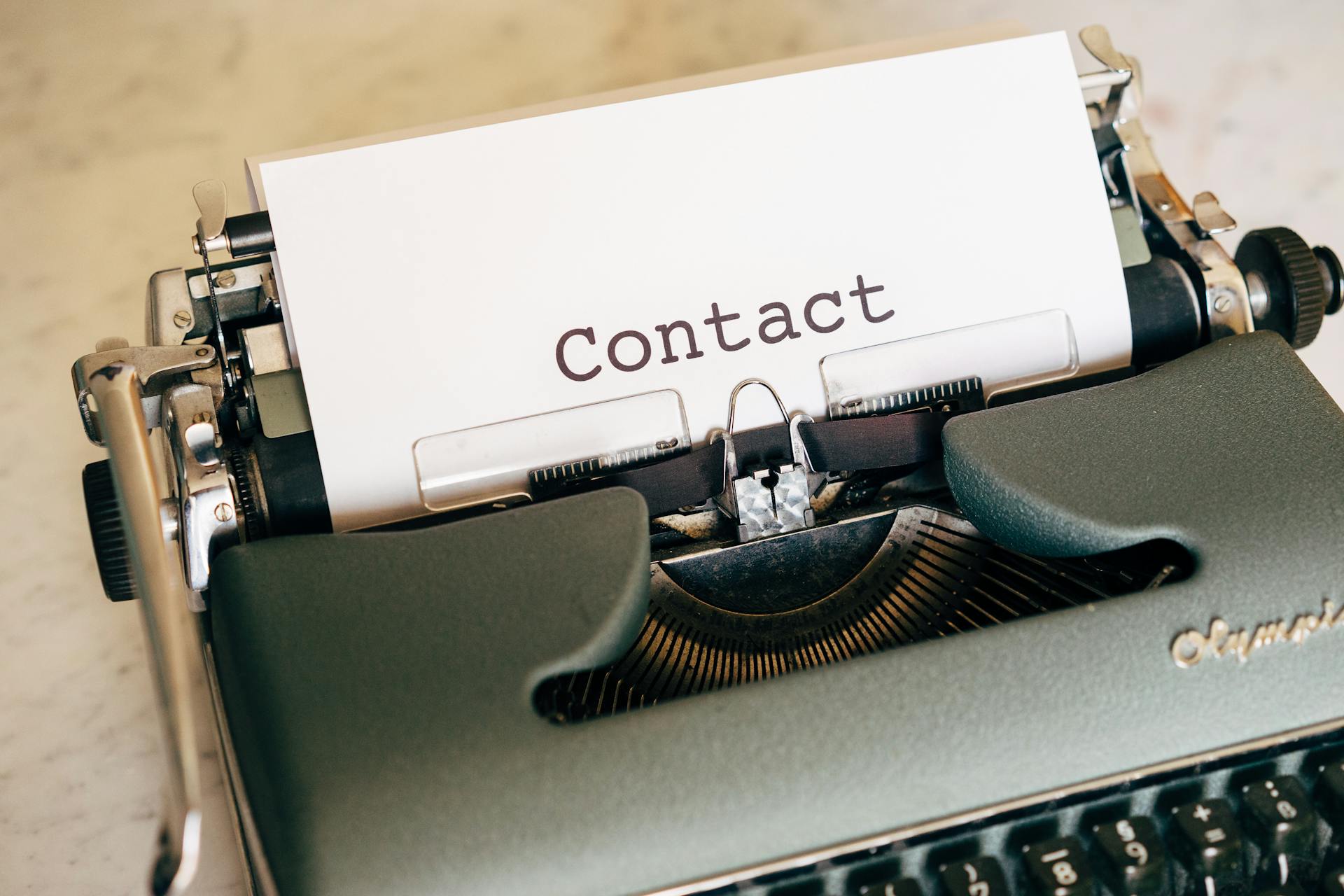
To keep the dollar box secure, write the numbers as far to the left as possible. This helps prevent tampering.
It's also essential to clearly enter a decimal and any numbers after the decimal. For example, if you're writing a check for $12.50, make sure to include the decimal point and the numbers after it.
For round dollar amounts, include ".00" in the dollar box. This ensures the amount is clear and can't be easily changed.
In theory, the number in the dollar box should match the amount written below it. However, if the two amounts don't match, the written words take precedence over the numbers in the dollar box.
If this caught your attention, see: Checkbook Numbers Explained
ABA Routing Number (MICR)
The ABA Routing Number (MICR) is located at the bottom left of your check. It serves as an address for your bank, allowing other banks to collect funds from your account when you write a check.
This number is written in a specific font with special ink, known as Magnetic Ink Character Recognition (MICR). This allows checks to be easily read and processed by computers.
To find your MICR line, look at the bottom of your check. It's usually the first line of numbers and letters.
Readers also liked: Micr Code on Checkbook
Check Writing and Depositing
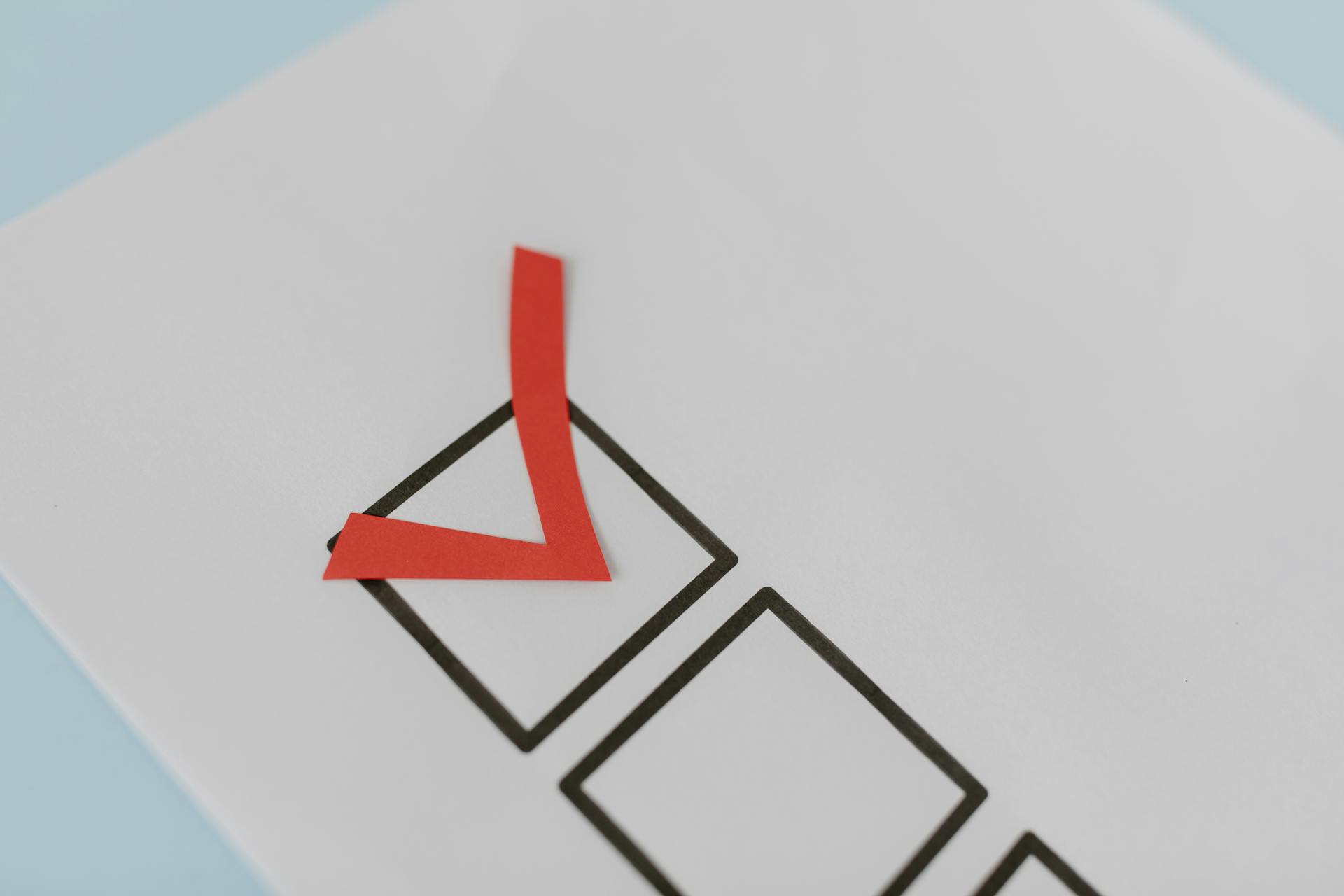
Writing a check is a straightforward process, but it's essential to get it right. A check is a bill of exchange or document that guarantees a certain amount of money, printed for the drawing bank to provide to an account holder (the payor) to use.
To write a check, you need to fill in the date, payee's name, amount in both words and numbers, and your signature. The payee's name goes on the first line in the center of the check, and the amount of the check in a dollar figure is filled out in the box next to the payee's name.
A check has several key features, including the name and contact information of the person writing the check, the date, payee's name, amount, and signature. The back of the check has an endorsement line for the payee's signature when they are cashing or depositing the check.
Here are the essential lines that need to be filled in by the payor:
- Date: written on the line in the top right corner of the check
- Payee's name: on the first line in the center of the check
- Amount: in a dollar figure in the box next to the payee's name
- Amount written out in words: on the line below the payee's name
- Signature: on the line at the bottom right corner of the check
If you're unsure about how to fill in a check, just remember to use the same signature used in other formalities of the bank to avoid any invalidation or cancellation of the cheque.
Bounced Checks
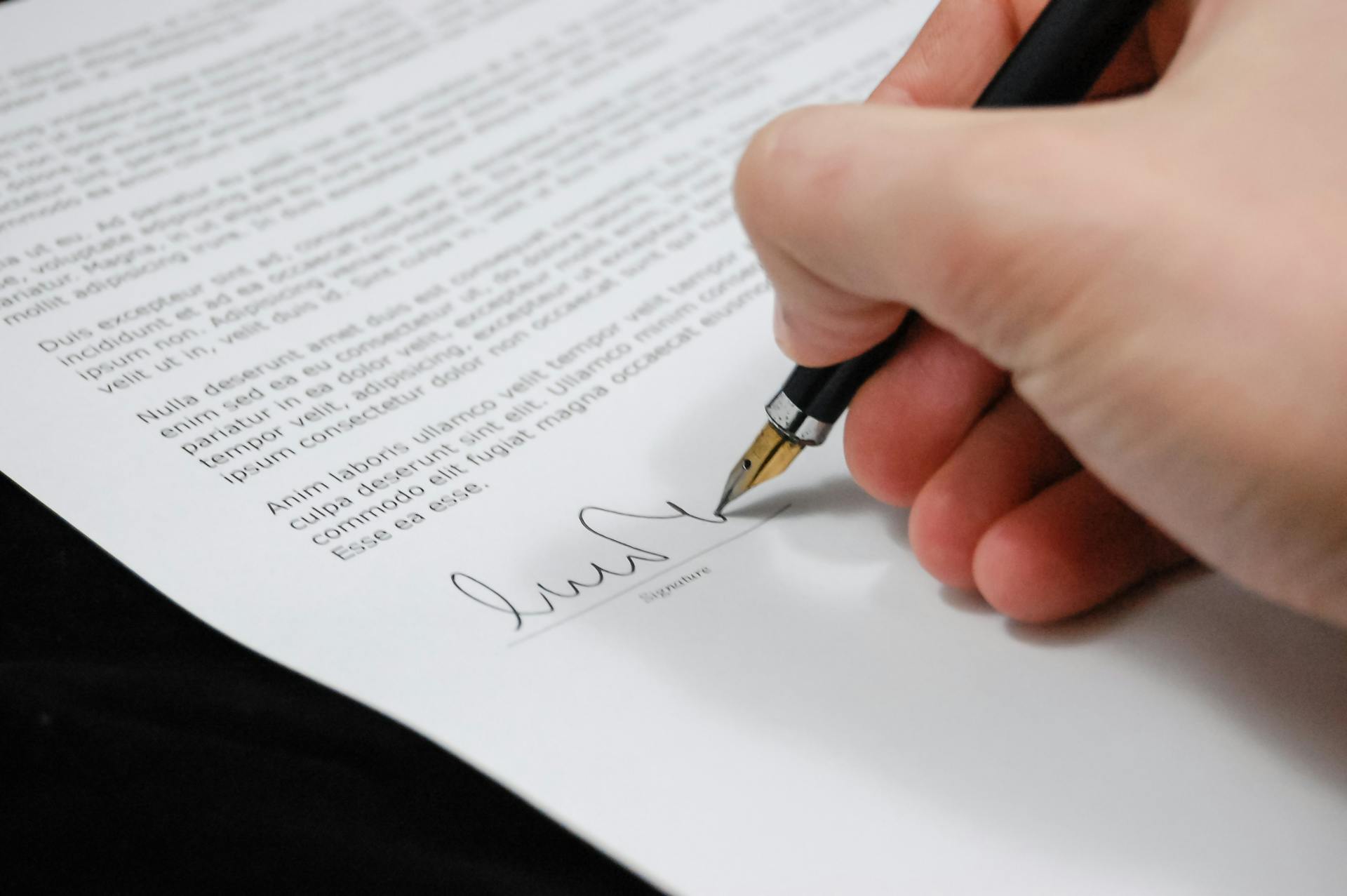
A bounced check is a check that cannot be negotiated because the account holder doesn't have enough money in their account. This happens when the check is written for an amount larger than what's held in the checking account.
The check bounces because of insufficient or non-sufficient funds (NSF) in the account. NSF and insufficient funds are interchangeable terms.
You can expect to pay a penalty fee for writing a bounced check. In some cases, the payee is also charged a fee.
Other checking account fees can include a monthly service fee, a per-check fee, a check printing fee, and a returned deposit item fee.
Expand your knowledge: What's a Revolving Account
Check Amount Verification
A certified check is a guarantee that the drawer's account has enough funds to honor the amount of the check.
To ensure a smooth transaction, it's essential to verify the check amount written out with words. This is done by writing the amount using words, as opposed to using numerals.

For instance, if you write a check for $10.50, you would write "Ten and 50/100" in this section. It's also a good idea to strike through any space before or after the amount to prevent alterations.
The bank will ignore any difference between the dollar box and the amount written in words, as words are harder to alter than numbers.
Curious to learn more? Check out: How to Write a Check without a Checkbook
Bank Cheque Writing Guidelines
To write a bank cheque, you need to follow some basic guidelines. You mustn't overwrite the cheque leaves, and unnecessary spaces between words and numbers should be avoided while filling the cheque leaf.
Before writing a bank cheque, make sure to follow these tips: one mustn't overwrite the cheque leaves, unnecessary spaces between words and numbers must be avoided, none of the columns must be left blank, and one must ensure that a cheque is not stapled or folded.
The date on a cheque must be written in the 'DD/MM/YYYY' format. The payee's name should be filled in correctly without leaving any space in the column or making mistakes. The amount in words should be written in the space provided beside "Rupees", and "ONLY /-" should be included at the end of the amount to prevent tampering.
A unique perspective: Capital One Credit Cards for Beginners
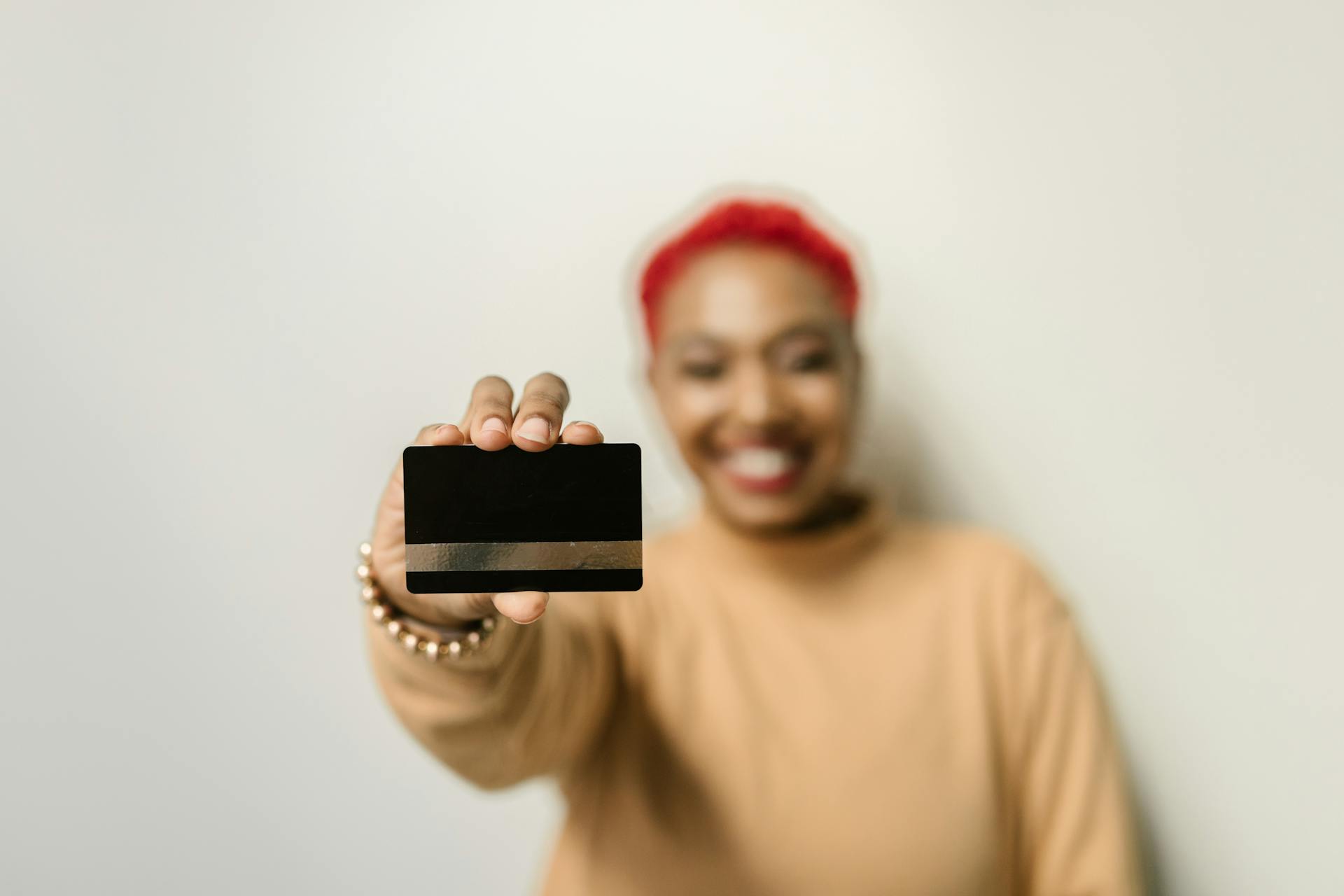
The same amount should be mentioned in numerical value within the box on the right side, starting with the Rupee symbol and leaving no space for alteration. The signature on a cheque should be consistent with the one used in other formalities of the bank to avoid invalidation or cancellation of the cheque.
Here are the key features to keep in mind while writing a bank cheque:
- Date: DD/MM/YYYY format
- Payee's name: no spaces, no mistakes
- Amount in words: "Rupees" followed by "ONLY /-"
- Amount in numbers: within the box, no spaces
- Signature: consistent with other bank formalities
Using an Old Address on a Check
Using an old address on a check is perfectly fine, as long as the routing and account numbers are current. This means your bank can still process the check.
The check format is divided into several parts, including the routing number, account number, and check number. The routing number is a nine-digit code that identifies the bank's location, while the account number is a unique number assigned to your account.
You can write a check without having to update your address, as long as the numbers are accurate. The person receiving the check will need to endorse it, which involves signing the back of the check.
Consider reading: Can You Use Checkbook with Old Address
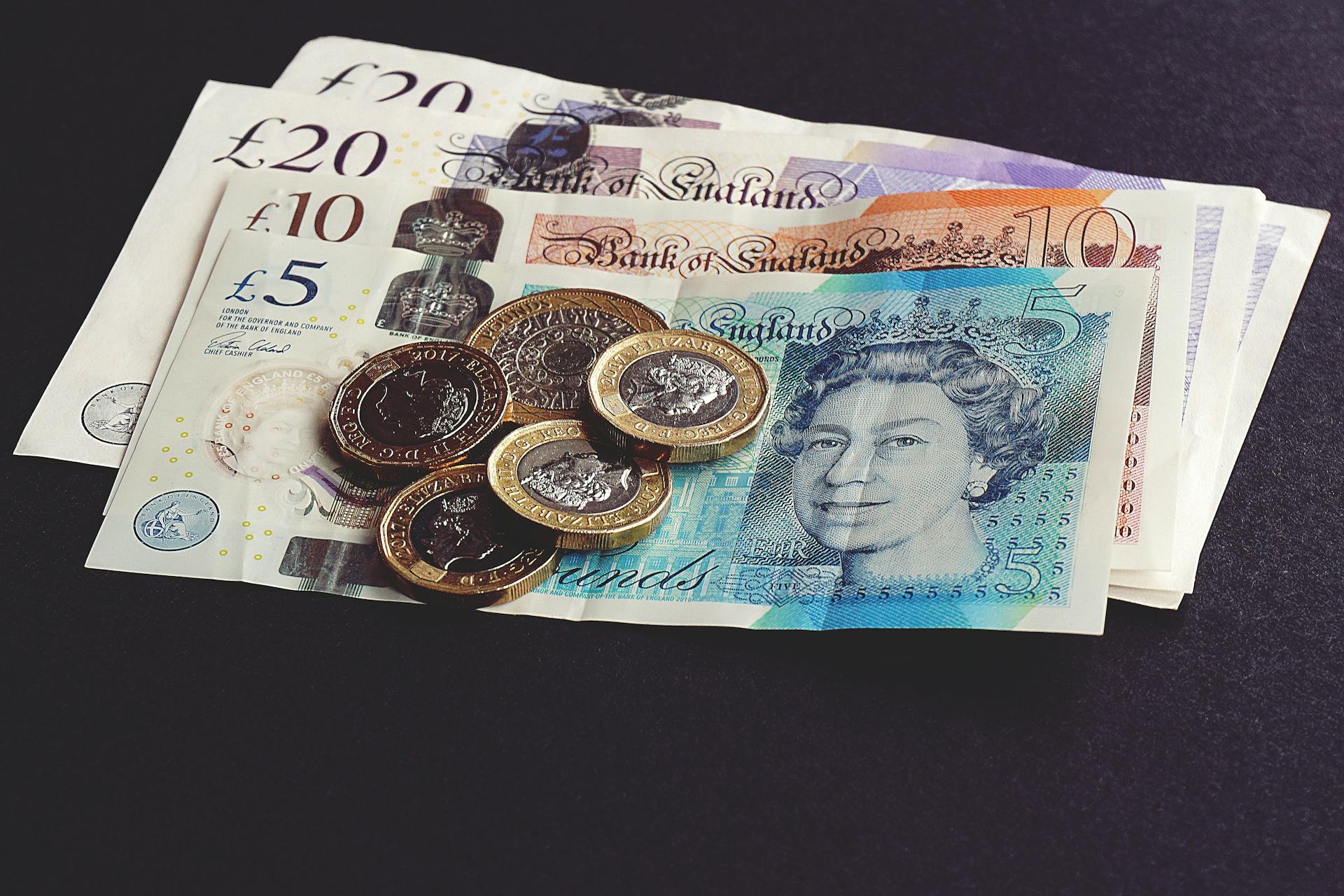
To endorse a check, simply sign your name on the back, making sure to write "Pay to the order of" followed by the payee's name. This ensures the check is transferred to the correct person.
If you need to endorse a check to someone else, you can do so by signing the back of the check and writing "Pay to the order of" followed by the new payee's name.
In some cases, you may need to find the account number on a check. This can be located in the bottom left corner of the check, along with the routing number.
Related reading: Td Bank Check Ordering
Featured Images: pexels.com
